Tubular Heat Exchanger Market Insights 2025, Analysis and Forecast to 2030, by Market Participants, Regions, Technology, Application
- Single User License (1 Users) $ 3,600
- Team License (2~5 Users) $ 4,600
- Corporate License (>5 Users) $ 5,600
Introduction
Tubular Heat Exchangers are efficient devices designed to transfer heat between fluids using a series of tubes, widely used in food and beverage, chemical processing, pharmaceuticals, wastewater treatment, and other applications. Typically constructed from steel or corrosion-resistant materials, they are valued for their simplicity, reliability, and adaptability to moderate pressure and temperature conditions. The industry is a steady segment of the global heat exchanger market, characterized by its straightforward design, cost-effectiveness, and suitability for hygienic and industrial processes. The market is driven by demand from food safety, chemical production, and wastewater management, particularly in regions with robust industrial and regulatory frameworks. However, it faces challenges from competition with advanced designs, high maintenance needs, and raw material costs, shaping its growth trajectory.
Market Size and Growth Forecast
The global Tubular Heat Exchanger market is estimated at approximately USD 1.2 to 1.5 billion in 2025, with a projected compound annual growth rate (CAGR) of 3.4% to 4.6% from 2025 to 2030, reaching USD 1.5 to 1.9 billion by 2030. This growth reflects stable demand from traditional industries, supported by food and chemical sectors, though moderated by competition and cost factors.
Regional Analysis
North America: Holding 20-25% of the market share, North America grows at 3-4%. The United States leads with demand in food and wastewater treatment, driven by regulatory standards. Trends focus on hygiene and efficiency.
Europe: Accounting for 25-30% of the market share, Europe grows at 2.5-3.5%. Germany and France emphasize food and pharmaceuticals, with trends highlighting sustainability and EU compliance.
Asia Pacific: Representing 35-40% of the market share, this region grows at 4-5%. China and India dominate due to chemical and food industries, with trends focusing on cost-effective solutions and industrial growth.
Rest of the World: With a 10-15% share, this region grows at 3-4%. Brazil and South Africa see uptake in food and wastewater, driven by emerging markets. Trends emphasize affordable systems.
Application Analysis
Food and Beverage: Expected to grow at 3.5-4.5%, used in processing and pasteurization. Trends focus on hygiene.
Chemical Processing: Projected at 3-4%, supporting reactions and cooling. Trends emphasize reliability.
Pharmaceuticals: Anticipated at 3.5-4.5%, ensuring product stability. Trends target sterile processing.
Wastewater Treatment: Expected to grow at 4-5%, managing effluents. Trends focus on sustainability.
Others: Projected at 2.5-3.5%, covering niche uses. Trends explore versatility.
Key Market Players
SPX FLOW: Offers efficient heat transfer solutions.
Alfa Laval: Specializes in tubular designs for food.
GEA: Provides exchangers for industrial uses.
Xylem: Supplies systems for wastewater treatment.
API Heat Transfer: Focuses on reliable exchanger designs.
These firms compete on reliability and cost.
Porter's Five Forces Analysis
Threat of New Entrants: Medium; moderate barriers allow entry, but established players limit competition.
Threat of Substitutes: Medium; plate exchangers compete, but tubular designs’ simplicity sustains demand.
Bargaining Power of Buyers: High; industrial clients negotiate pricing.
Bargaining Power of Suppliers: Medium; reliance on steel gives leverage, offset by sourcing options.
Competitive Rivalry: High; players compete on cost and reliability.
Opportunities:
-Growing food safety needs boost demand in food and beverage.
-Wastewater treatment expansion in Asia Pacific offers growth potential.
-Cost-effective designs appeal to emerging markets.
Challenges:
-Competition from advanced designs limits market share.
-High maintenance needs increase operational costs.
-Raw material cost fluctuations challenge profitability.
Chapter 1 Executive Summary
Chapter 2 Abbreviation and Acronyms
Chapter 3 Preface
3.1 Research Scope
3.2 Research Sources
3.2.1 Data Sources
3.2.2 Assumptions
3.3 Research Method
Chapter 4 Market Landscape
4.1 Market Overview
4.2 Classification/Types
4.3 Application/End Users
Chapter 5 Market Trend Analysis
5.1 Introduction
5.2 Drivers
5.3 Restraints
5.4 Opportunities
5.5 Threats
Chapter 6 Industry Chain Analysis
6.1 Upstream/Suppliers Analysis
6.2 Tubular Heat Exchanger Analysis
6.2.1 Technology Analysis
6.2.2 Cost Analysis
6.2.3 Market Channel Analysis
6.3 Downstream Buyers/End Users
Chapter 7 Latest Market Dynamics
7.1 Latest News
7.2 Merger and Acquisition
7.3 Planned/Future Project
7.4 Policy Dynamics
Chapter 8 Historical and Forecast Tubular Heat Exchanger Market in North America (2020-2030)
8.1 Tubular Heat Exchanger Market Size
8.2 Tubular Heat Exchanger Market by End Use
8.3 Competition by Players/Suppliers
8.4 Tubular Heat Exchanger Market Size by Type
8.5 Key Countries Analysis
8.5.1 United States
8.5.2 Canada
8.5.3 Mexico
Chapter 9 Historical and Forecast Tubular Heat Exchanger Market in South America (2020-2030)
9.1 Tubular Heat Exchanger Market Size
9.2 Tubular Heat Exchanger Market by End Use
9.3 Competition by Players/Suppliers
9.4 Tubular Heat Exchanger Market Size by Type
9.5 Key Countries Analysis
9.5.1 Brazil
9.5.2 Argentina
9.5.3 Chile
9.5.4 Peru
Chapter 10 Historical and Forecast Tubular Heat Exchanger Market in Asia & Pacific (2020-2030)
10.1 Tubular Heat Exchanger Market Size
10.2 Tubular Heat Exchanger Market by End Use
10.3 Competition by Players/Suppliers
10.4 Tubular Heat Exchanger Market Size by Type
10.5 Key Countries Analysis
10.5.1 China
10.5.2 India
10.5.3 Japan
10.5.4 South Korea
10.5.5 Southest Asia
10.5.6 Australia
Chapter 11 Historical and Forecast Tubular Heat Exchanger Market in Europe (2020-2030)
11.1 Tubular Heat Exchanger Market Size
11.2 Tubular Heat Exchanger Market by End Use
11.3 Competition by Players/Suppliers
11.4 Tubular Heat Exchanger Market Size by Type
11.5 Key Countries Analysis
11.5.1 Germany
11.5.2 France
11.5.3 United Kingdom
11.5.4 Italy
11.5.5 Spain
11.5.6 Belgium
11.5.7 Netherlands
11.5.8 Austria
11.5.9 Poland
11.5.10 Russia
Chapter 12 Historical and Forecast Tubular Heat Exchanger Market in MEA (2020-2030)
12.1 Tubular Heat Exchanger Market Size
12.2 Tubular Heat Exchanger Market by End Use
12.3 Competition by Players/Suppliers
12.4 Tubular Heat Exchanger Market Size by Type
12.5 Key Countries Analysis
12.5.1 Egypt
12.5.2 Israel
12.5.3 South Africa
12.5.4 Gulf Cooperation Council Countries
12.5.5 Turkey
Chapter 13 Summary For Global Tubular Heat Exchanger Market (2020-2025)
13.1 Tubular Heat Exchanger Market Size
13.2 Tubular Heat Exchanger Market by End Use
13.3 Competition by Players/Suppliers
13.4 Tubular Heat Exchanger Market Size by Type
Chapter 14 Global Tubular Heat Exchanger Market Forecast (2025-2030)
14.1 Tubular Heat Exchanger Market Size Forecast
14.2 Tubular Heat Exchanger Application Forecast
14.3 Competition by Players/Suppliers
14.4 Tubular Heat Exchanger Type Forecast
Chapter 15 Analysis of Global Key Vendors
15.1 SPX FLOW
15.1.1 Company Profile
15.1.2 Main Business and Tubular Heat Exchanger Information
15.1.3 SWOT Analysis of SPX FLOW
15.1.4 SPX FLOW Tubular Heat Exchanger Revenue, Gross Margin and Market Share (2020-2025)
15.2 Alfa Laval
15.2.1 Company Profile
15.2.2 Main Business and Tubular Heat Exchanger Information
15.2.3 SWOT Analysis of Alfa Laval
15.2.4 Alfa Laval Tubular Heat Exchanger Revenue, Gross Margin and Market Share (2020-2025)
15.3 GEA
15.3.1 Company Profile
15.3.2 Main Business and Tubular Heat Exchanger Information
15.3.3 SWOT Analysis of GEA
15.3.4 GEA Tubular Heat Exchanger Revenue, Gross Margin and Market Share (2020-2025)
15.4 Xylem
15.4.1 Company Profile
15.4.2 Main Business and Tubular Heat Exchanger Information
15.4.3 SWOT Analysis of Xylem
15.4.4 Xylem Tubular Heat Exchanger Revenue, Gross Margin and Market Share (2020-2025)
15.5 API Heat Transfer
15.5.1 Company Profile
15.5.2 Main Business and Tubular Heat Exchanger Information
15.5.3 SWOT Analysis of API Heat Transfer
15.5.4 API Heat Transfer Tubular Heat Exchanger Revenue, Gross Margin and Market Share (2020-2025)
15.6 Tetra Pak
15.6.1 Company Profile
15.6.2 Main Business and Tubular Heat Exchanger Information
15.6.3 SWOT Analysis of Tetra Pak
15.6.4 Tetra Pak Tubular Heat Exchanger Revenue, Gross Margin and Market Share (2020-2025)
15.7 Wila
15.7.1 Company Profile
15.7.2 Main Business and Tubular Heat Exchanger Information
15.7.3 SWOT Analysis of Wila
15.7.4 Wila Tubular Heat Exchanger Revenue, Gross Margin and Market Share (2020-2025)
15.8 HRS Heat Exchangers
15.8.1 Company Profile
15.8.2 Main Business and Tubular Heat Exchanger Information
15.8.3 SWOT Analysis of HRS Heat Exchangers
15.8.4 HRS Heat Exchangers Tubular Heat Exchanger Revenue, Gross Margin and Market Share (2020-2025)
Please ask for sample pages for full companies list
......
Figure Market Size Estimated Method
Figure Major Forecasting Factors
Figure Tubular Heat Exchanger Picture
Figure 2020-2030 North America Tubular Heat Exchanger Market Size And Cagr
Figure 2020-2030 South America Tubular Heat Exchanger Market Size And Cagr
Figure 2020-2030 Asia & Pacific Tubular Heat Exchanger Market Size And Cagr
Figure 2020-2030 Europe Tubular Heat Exchanger Market Size And Cagr
Figure 2020-2030 Mea Tubular Heat Exchanger Market Size And Cagr
Figure 2020-2025 Global Tubular Heat Exchanger Market Size And Growth Rate
Figure 2025-2030 Global Tubular Heat Exchanger Market Size And Growth Rate
Research Methodology
- Market Estimated Methodology:
Bottom-up & top-down approach, supply & demand approach are the most important method which is used by HDIN Research to estimate the market size.
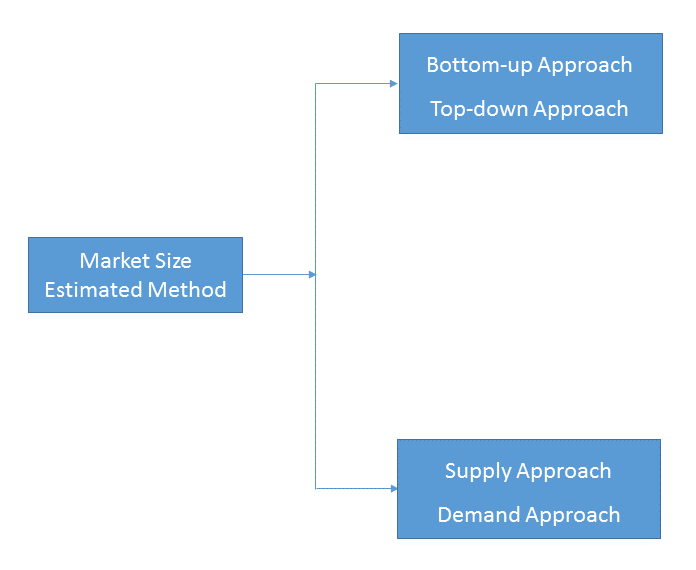
1)Top-down & Bottom-up Approach
Top-down approach uses a general market size figure and determines the percentage that the objective market represents.
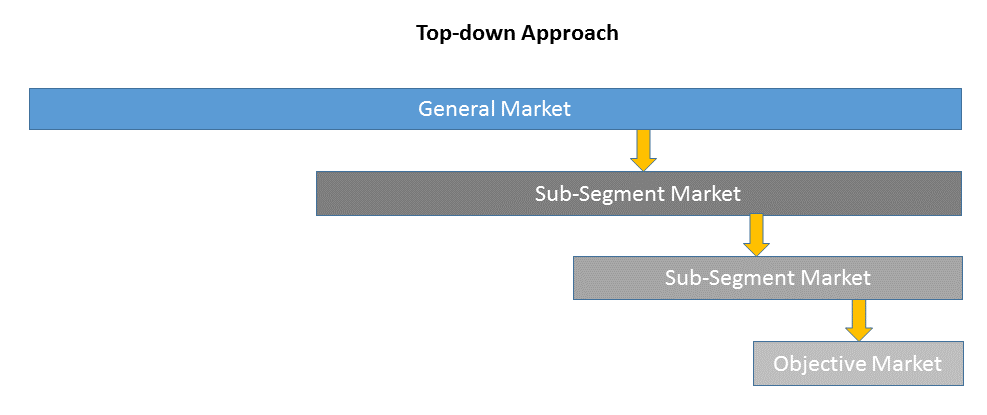
Bottom-up approach size the objective market by collecting the sub-segment information.

2)Supply & Demand Approach
Supply approach is based on assessments of the size of each competitor supplying the objective market.
Demand approach combine end-user data within a market to estimate the objective market size. It is sometimes referred to as bottom-up approach.
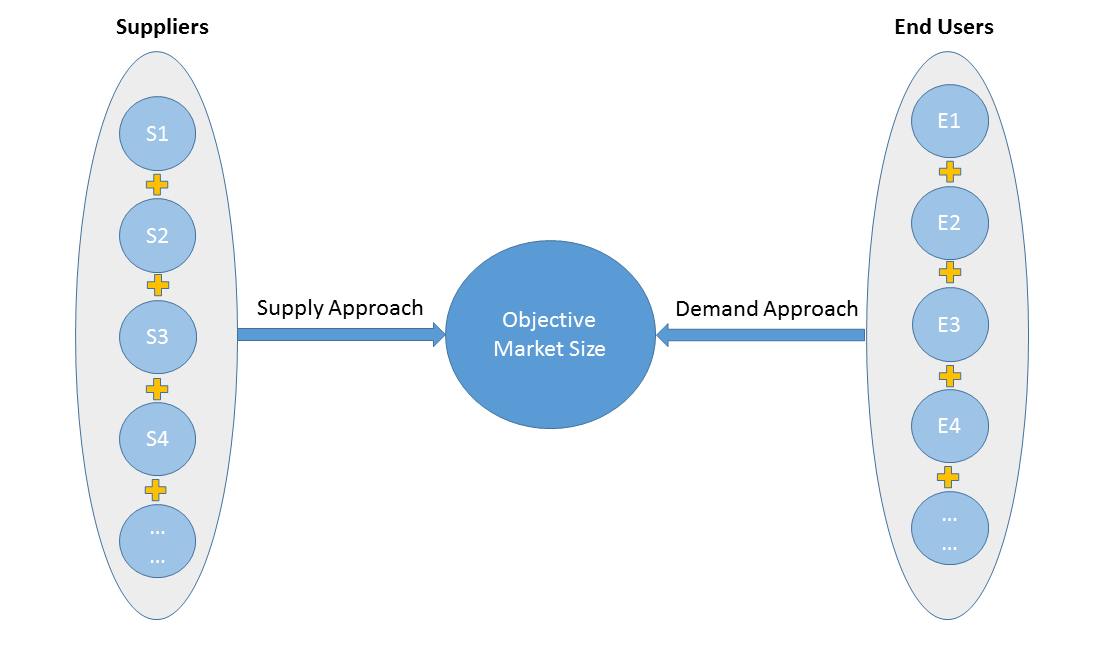
- Forecasting Methodology
- Numerous factors impacting the market trend are considered for forecast model:
- New technology and application in the future;
- New project planned/under contraction;
- Global and regional underlying economic growth;
- Threatens of substitute products;
- Industry expert opinion;
- Policy and Society implication.
- Analysis Tools
1)PEST Analysis
PEST Analysis is a simple and widely used tool that helps our client analyze the Political, Economic, Socio-Cultural, and Technological changes in their business environment.
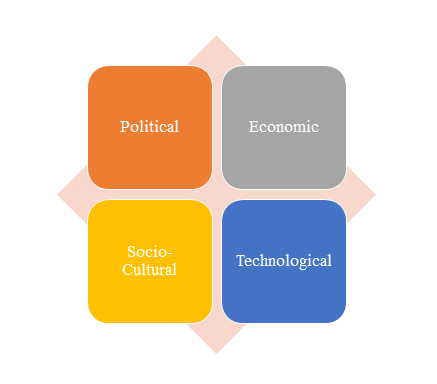
- Benefits of a PEST analysis:
- It helps you to spot business opportunities, and it gives you advanced warning of significant threats.
- It reveals the direction of change within your business environment. This helps you shape what you’re doing, so that you work with change, rather than against it.
- It helps you avoid starting projects that are likely to fail, for reasons beyond your control.
- It can help you break free of unconscious assumptions when you enter a new country, region, or market; because it helps you develop an objective view of this new environment.
2)Porter’s Five Force Model Analysis
The Porter’s Five Force Model is a tool that can be used to analyze the opportunities and overall competitive advantage. The five forces that can assist in determining the competitive intensity and potential attractiveness within a specific area.
- Threat of New Entrants: Profitable industries that yield high returns will attract new firms.
- Threat of Substitutes: A substitute product uses a different technology to try to solve the same economic need.
- Bargaining Power of Customers: the ability of customers to put the firm under pressure, which also affects the customer's sensitivity to price changes.
- Bargaining Power of Suppliers: Suppliers of raw materials, components, labor, and services (such as expertise) to the firm can be a source of power over the firm when there are few substitutes.
- Competitive Rivalry: For most industries the intensity of competitive rivalry is the major determinant of the competitiveness of the industry.
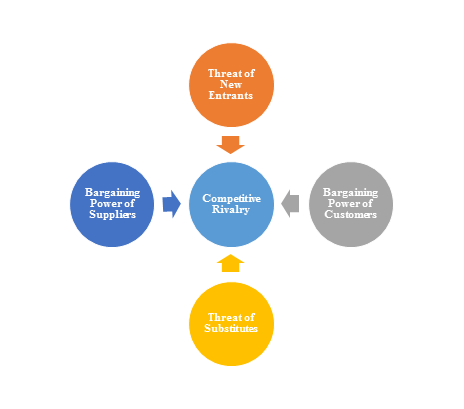
3)Value Chain Analysis
Value chain analysis is a tool to identify activities, within and around the firm and relating these activities to an assessment of competitive strength. Value chain can be analyzed by primary activities and supportive activities. Primary activities include: inbound logistics, operations, outbound logistics, marketing & sales, service. Support activities include: technology development, human resource management, management, finance, legal, planning.
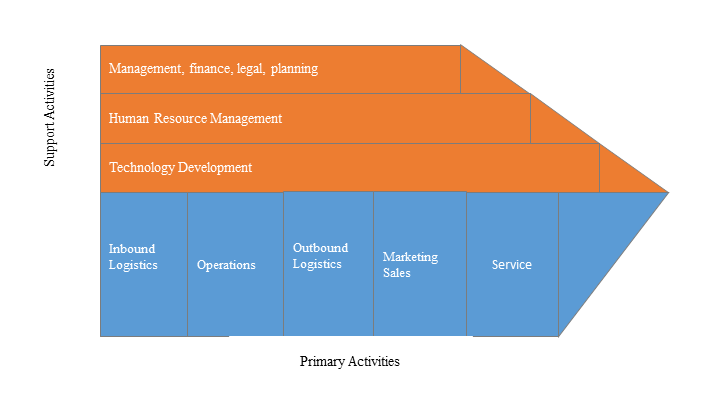
4)SWOT Analysis
SWOT analysis is a tool used to evaluate a company's competitive position by identifying its strengths, weaknesses, opportunities and threats. The strengths and weakness is the inner factor; the opportunities and threats are the external factor. By analyzing the inner and external factors, the analysis can provide the detail information of the position of a player and the characteristics of the industry.
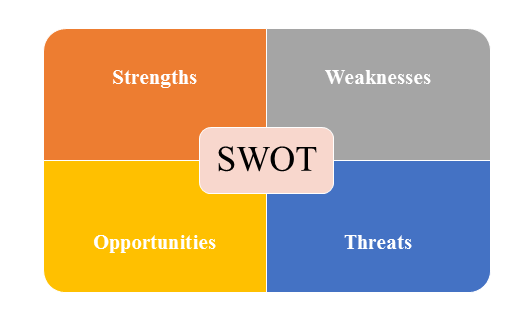
- Strengths describe what the player excels at and separates it from the competition
- Weaknesses stop the player from performing at its optimum level.
- Opportunities refer to favorable external factors that the player can use to give it a competitive advantage.
- Threats refer to factors that have the potential to harm the player.
- Data Sources
| Primary Sources | Secondary Sources |
|---|---|
| Face to face/Phone Interviews with market participants, such as: Manufactures; Distributors; End-users; Experts. Online Survey |
Government/International Organization Data: Annual Report/Presentation/Fact Book Internet Source Information Industry Association Data Free/Purchased Database Market Research Report Book/Journal/News |